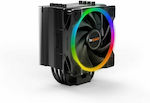The most important change in Alder Lake processors is their construction, called Intel 7. Essentially, it is a 10nm lithography but through special design, it achieves the same results, according to Intel, in space saving compared to the 7nm lithography used by other manufacturers. So Intel calls it Intel 7, in an effort to divert attention away from the actual nanometers.
Full review by Hardware Busters here: https://youtu.be/TJ7s34skrC8
The most powerful Alder Lake processors are the i9-12900K and KF. The i7-12700K and KF follow, and then we have the i5-12600K and KF. The difference between the K and KF processors is that the latter do not have an iGPU, meaning an integrated graphics card. The i9 processors have 8P and 8E cores, the i7 has 8+4, and the i5 has 6+4. As for L3 cache, the i9 has 30MB, the i7 has 25MB, and the i5 has 20MB. Finally, Turbo Boost Max 3.0 is only available in the i9 and i7.
The major changes, apart from the new cores, are the new PCIe communication bus and the new type of memory supported by Alder Lake. Fortunately, for those who don't want to dig deep into their pockets, there is support for DDR4. Alder Lake supports up to 128GB DDR5-4800 MHz RAM and has 40-bit communication channels for each pair of DIMM memory, while DDR4 uses a 64-bit channel for each DIMM.
As for PCIe devices, the new Gen 5 standard is supported. Alder Lake has 16 PCIe Gen 5 lanes that go to the graphics card port. They also have four Gen 4 lanes with the NVMe port, which is located near the processor. However, to take advantage of the above, the corresponding chipset is also needed, which we will discuss later.
The new Intel Z690 chipset is the first to support the new generation processors and is the most advanced of the new technology chipsets, as well as the most expensive. It supports DDR5 as well as DDR4, but for now, you won't find motherboards with simultaneous support for both memory types.
After a long time, Intel once again wins the award for top performance with the Alder Lake processors, which are clearly better than the equivalent Zen 3 processors. If the giant Intel is challenged, it has the means and the expertise to respond to the blow, and in the end, that's good for all of us, the consumers. You see, the prices of AMD Zen 3 have finally started to drop and will drop even further until the new generation of processors that will face Alder Lake is released. I hope to soon have the opportunity to test the smallest member of Intel's new series, the i5-12600K, and compare it to the AMD Ryzen 5 5600x.
Pros:
• Good price considering their performance
• Great improvement compared to the previous generation (Rocket Lake)
• Impressive performance in single-thread applications
• Efficient in multi-thread applications
• Unlocked multiplier
• Improved efficiency compared to the previous generation
• Versions with integrated graphics (iGPUs)
• Support for PCIe 5.0 and DDR5
• Improved 10nm lithography
Cons:
• High power consumption under load
• Requires a powerful cooling system
• Requires a new motherboard and cooling system with support for the new socket
• Does not come with a cooling system
• Efficiency in single-thread applications can be improved



































































